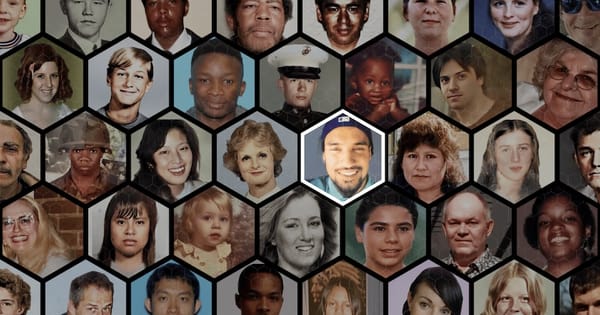Forensic DNA typing has been transformative in criminal investigations, earning the reputation of the forensic gold standard. Over decades, this technology has provided invaluable investigative leads, fueled innovation, and raised the bar for validation studies, quality assurance, and forensic standards. A critical part of this success has been the use of short tandem repeat (STR) markers, analyzed through polymerase chain reaction (PCR) and capillary electrophoresis (CE).
Five key waves of progress have established STRs as the standard in forensic DNA typing. The first wave began in the 1980s when DNA’s potential as a highly discriminatory tool was first realized, capable of distinguishing individuals across various biological tissues. The second wave came with the introduction of PCR in the late 1980s, enhancing the sensitivity of DNA testing and enabling the analysis of trace DNA samples.
By the 1990s, the third wave arrived as STR markers became the preferred choice for forensic investigations due to their high discrimination power and compatibility with PCR. STRs can be captured in small-sized amplicons, which made them ideal for multiplex analysis and useful for interpreting DNA mixtures.
The fourth wave saw the rise of national DNA databases, like CODIS, which began in the U.S. and allowed forensic samples to be compared against known offenders and relatives to generate investigative leads. As of February 2024, CODIS has generated over 698,000 hits, proving the success of DNA database searching. The final and fifth wave was enabled by federal support through legislation like the Debbie Smith Act, which allocated over $2 billion to enhance STR typing capabilities, further populating CODIS and ensuring quality forensic work at every level. This significant investment helped STR profiling become a global standard in forensic science, benefiting victims, law enforcement, and communities.
The Limitations of STR Typing: Enter SNP Profiling
While STR typing has revolutionized forensic science, it has its limitations. Today, hundreds of thousands of unsolved violent crimes are stalled because CODIS relies on an exact or near exact match to a profile in the database. Additionally, some forensic samples are too degraded or too minimal in quantity or quality, for STR analysis.
This is where the sixth wave of forensic genetics emerges: massively parallel sequencing (MPS) and the analysis of single nucleotide polymorphisms (SNPs). Unlike STR markers, which analyze only a handful of highly variable regions, SNPs represent variations at single genomic positions, and there are millions of them spread throughout the human genome.
SNPs may be less informative than STRs on a per-marker basis, but with MPS, hundreds of thousands of SNP markers can be analyzed simultaneously, often from highly degraded samples that would not yield results through STR typing. Moreover, MPS is becoming increasingly cost-effective and accessible, positioning SNPs as the future of forensic DNA analysis.
Expanding Investigative Potential with SNP Testing
The real power of SNP testing, as with STRs, is amplified through the use of DNA databases. Unlike CODIS, where a suspect or relative must already exist in the system, SNP databases rely on volunteer profiles from individuals who consent to share their DNA to aid in criminal investigations.
With genome-wide SNP testing, it’s possible to identify distant relatives up to 6th cousins and beyond, greatly expanding the potential pool of investigative leads. By combining SNP profiles with genealogical data, forensic genetic genealogy (FGG) has become a force-multiplier in the fight against unsolved cases. The resolution of the Carla Walker case, which had baffled investigators for nearly 50 years, is a prime example of how this new forensic technology can bring closure to long-standing cases.
The Need for Infrastructure and Support
To fully realize the potential of SNP-based testing and forensic genetic genealogy, substantial investments are needed. To date, FGG has been largely supported by grants, limited police budgets, crowdfunding, and volunteer efforts. However, these approaches are neither scalable nor sustainable long-term. While these methods have helped fill gaps in funding and support, they are not a substitute for a dedicated, well-funded forensic infrastructure.
We deserve a forensic workforce and technology infrastructure specifically designed for SNP testing—an approach that can only be achieved through proper funding and federal support. Just as the federal government invested in STR typing and national DNA databases, a similar commitment is needed to ensure that FGG services are accessible to all agencies and victims, not just those with more affluent resources or high-profile cases.
Accelerating the adoption of SNP-based testing in public laboratories should be a priority. This will require collaboration between public, private, and academic sectors to develop an action plan that equips laboratories with the necessary technology, training, and validation studies. With proper infrastructure and resources, FGG can help solve cases more efficiently, prevent future crimes, and ultimately bring justice to victims and their families.
We Need to Invest in Our Future Now
Forensic genetic genealogy has already proven to be a force-multiplier in solving cold and contemporary cases. But for SNP testing to reach its full potential, it requires broader federal support and collective action. While crowdfunding and volunteer efforts have helped bridge the gap, these approaches are neither scalable nor sustainable in the long term. We deserve a forensic workforce and technology infrastructure specifically tailored to SNP testing, which can only be achieved through proper funding and support.
Forensic professionals must advocate for these advanced methods to be integrated into public labs, ensuring their teams have the tools and training needed for this technology. Lawmakers must mandate and allocate resources to build the necessary infrastructure, allowing every jurisdiction—not just the most affluent—to access these methods. The general public, too, has a role to play by contacting local legislators and raising awareness of the power of forensic genetic genealogy to solve crimes and bring justice to victims. Families of victims and missing persons should advocate for the adoption of these methods to help close unsolved cases and provide the answers they’ve been waiting for.
In the meantime, we all need to do our best for as many cases as possible. Our team operates the world's first purpose-built forensic laboratory for forensic genetic genealogy and we can help you solve your case. If you work in a public crime lab, we can help your lab onboard this technology. We developed Forensic-Grade Genome Sequencing® or FGGS® and more forensic genetic genealogy cases have been solved with FGGS® than any other method.
Let’s work together to unlock answers and bring justice to those who need it most. Get started here.





